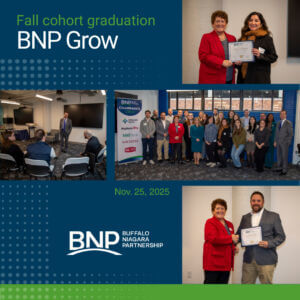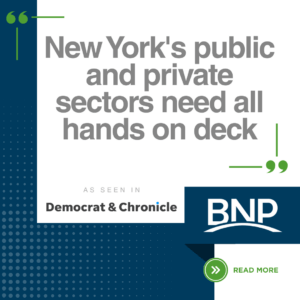
The BNP has entered into strategic agreements with two Southern Ontario Chambers of Commerce: the Hamilton Chamber of Commerce and the Greater Niagara Chamber of Commerce. As a member of the Partnership, these agreements provide you with a reciprocal associate membership with both the Hamilton and Greater Niagara Chambers at no additional cost to you.
As an associate member of the Hamilton and Greater Niagara Chambers, you will have access to events, business networking, and cross-border news. These agreements give you the opportunity to collaborate with a wider network of business professionals across the border.
You will now receive the following:
- Access to Hamilton and Greater Niagara events and programs at member pricing
- Opportunities to highlight your company’s brand in Southern Ontario
From the Blog
BNP Grow leadership development cohort celebrates fall graduation
The second BNP Grow leadership development cohort celebrated its graduation on Nov. 25 at BNP @ the cobblestone. The five-session introductory program set participants on a growth path to leadership, giving them the essential professional skills and knowledge they need to thrive.
A growing New York requires all-of-the-above on energy generation
BNP CEO Dottie Gallagher, CenterState CEO President & CEO Robert Simpson and Greater Rochester Chamber of Commerce President & CEO Bob Duffy outline why New York must accelerate upgrades and adopt an all-of-the-above energy strategy to support growing industries and communities. Special to the USA TODAY Network.
Buffalo Niagara Partnership celebrates 140 employers at first Economic Champions event
More than 400 of Western New York’s top leaders, change makers and innovators joined the Buffalo Niagara Partnership on Nov. 18 at The Admiral Room to raise a glass to the employers driving Buffalo Niagara’s economy forward.
How to sustain and build your business for long-term success
As the business landscape in Western New York continues to evolve, business owners face new challenges and opportunities for growth and success. Learn how businesses can cultivate strong talent pipelines, embrace innovation and digital tools, and create comprehensive succession plans to ensure long-term success. Presented by Bank of America.




